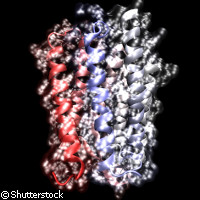EU-funded scientists reveal secrets of proteins in mitochondria
A team of Belgian and German scientists has for the first time successfully mapped the full inventory of proteins in yeast mitochondria. The partly EU-funded research that has now been published in the journal Cell represents important progress in the understanding of the fundamental workings of proteins, the basic building blocks of life. Part of the financial support for this study came out of the INTERACTION PROTEOME ('Functional proteomics: towards defining the interaction proteome') project, funded under the 'Life sciences, genomics and biotechnology for health' Theme of the Sixth Framework Programme (FP6). Thanks to a new technique developed at the Flanders Institute for Biotechnology (VIB) and Ghent University, both in Belgium, the researchers not only managed to identify the largest part of the protein mix in the energy-producing mitochondria, they also discovered a previously unknown enzyme. Dubbed Icp55, the enzyme is responsible for stabilising the proteins in the mitochondria, pruning the ends of certain unstable forms of proteins. The process had been a mystery to scientists until now. Due to their sheer number and variety, proteins are notoriously hard to study. Therefore, Dr Kris Gevaert of VIB/Ghent University, one of the authors of the study, stresses the importance of these findings for fundamental research on proteins. 'It's the first time that such a precise protein determination of the mitochondria has been achieved,' he says. 'We're now able to detect protein forms that were simply overlooked before. So we're receiving requests for scientific collaborations from all over the world.' The analysis was made using combined fractional diagonal chromatography (COFRADIC). As opposed to traditional analytical methods, this new chromatographic technique breaks up the protein mix into individual subunits or peptides. Since peptides are shorter than proteins, more soluble and easier to separate, they make it possible 'to analyse protein mixtures much more sensitively and accurately,' Dr Gevaert explains. There are roughly 1,000 different proteins in yeast mitochondria, while human mitochondria contain between 1,200 and 1,500. The proteins are key to numerous processes, including genome maintenance, signalling processes and programmed cell death.
Countries
Belgium, Germany



